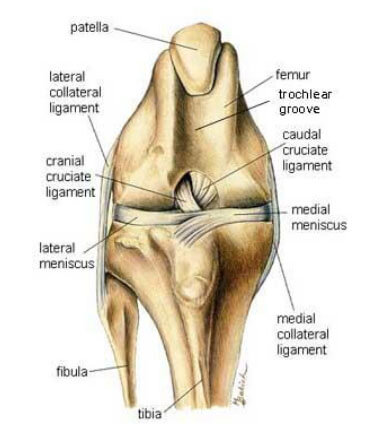Monday-Friday 7 AM to 7 PM
Saturday 9 AM to 5 PM
Katy, Texas 77450
Patellar Luxation (Dislocated Kneecap)

What is a Patella and its Function?
The patella, or knee cap, is a small bone buried in the muscles of the thigh. The patella normally sits in the femoral groove within the knee joint. When a dog is diagnosed with a luxating patella, the patella does not sit correctly in the femoral groove when the leg is flexed. It can luxate medially (inward) or laterally (outward) on the groove.
There are 4 Grades that can be associated with a luxating patella. Grade 1 is very minimal, probably not of much concern. Grade 4 is very severe (most likely hindering the quality of life of the pet), and these patellas need surgical assistance.
Treatment of a Torn CCL Ligament
If the ligament is completely torn, we highly recommend repairing it with surgery. If the ruptured cruciate is not treated, severe degenerative joint disease (arthritis) usually occurs. Additionally, because the dog favors the affected leg, he will generally put more weight on the unaffected leg. It is not unusual for the dog to rupture the other ligament as well because of the increased stress on the leg.
What Can I Expect After Surgery?
Although not a requirement, we recommend the patient spend the night for monitoring. Patients are typically discharged either late the day of the surgery, or after 9am the next day. Your pet will go home with pain medication and an antibiotic. Once discharged, your dog must have restricted activity (only short walks on a leash) for about 7 days. The patient must not go up and down stairs and his/her access to slick floors must be minimized. In other words, absolutely no running freely at the dog park or in the backyard!
If possible, crate resting is the best option for at least the first week. The surgeon will discuss with you about applying a cold compress to the leg and gentle massaging of the area. In about 7- 10 days, your pet will return to the clinic for a recheck and suture/staple removal. Once reassessed and the sutures or staples have been removed, the veterinarian will instruct you how to gradually increase your pet’s activity and as to when your pet may return to his normal routine. Please note, it is not unusual for your pet to limp or “skip” for up to 3 months post-operatively.